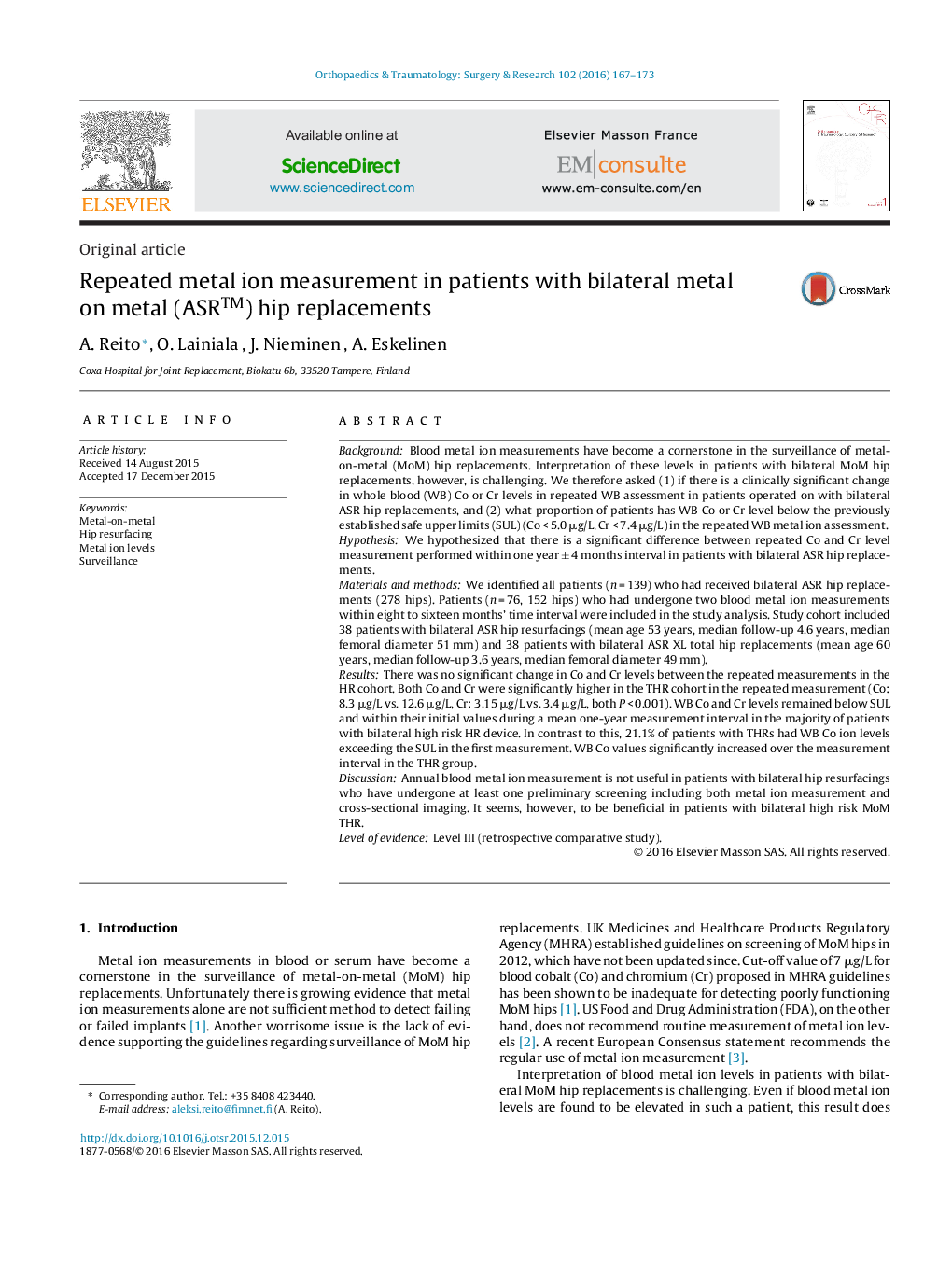| کد مقاله | کد نشریه | سال انتشار | مقاله انگلیسی | نسخه تمام متن |
|---|---|---|---|---|
| 4080820 | 1267568 | 2016 | 7 صفحه PDF | دانلود رایگان |

BackgroundBlood metal ion measurements have become a cornerstone in the surveillance of metal-on-metal (MoM) hip replacements. Interpretation of these levels in patients with bilateral MoM hip replacements, however, is challenging. We therefore asked (1) if there is a clinically significant change in whole blood (WB) Co or Cr levels in repeated WB assessment in patients operated on with bilateral ASR hip replacements, and (2) what proportion of patients has WB Co or Cr level below the previously established safe upper limits (SUL) (Co < 5.0 μg/L, Cr < 7.4 μg/L) in the repeated WB metal ion assessment.HypothesisWe hypothesized that there is a significant difference between repeated Co and Cr level measurement performed within one year ± 4 months interval in patients with bilateral ASR hip replacements.Materials and methodsWe identified all patients (n = 139) who had received bilateral ASR hip replacements (278 hips). Patients (n = 76, 152 hips) who had undergone two blood metal ion measurements within eight to sixteen months’ time interval were included in the study analysis. Study cohort included 38 patients with bilateral ASR hip resurfacings (mean age 53 years, median follow-up 4.6 years, median femoral diameter 51 mm) and 38 patients with bilateral ASR XL total hip replacements (mean age 60 years, median follow-up 3.6 years, median femoral diameter 49 mm).ResultsThere was no significant change in Co and Cr levels between the repeated measurements in the HR cohort. Both Co and Cr were significantly higher in the THR cohort in the repeated measurement (Co: 8.3 μg/L vs. 12.6 μg/L, Cr: 3.15 μg/L vs. 3.4 μg/L, both P < 0.001). WB Co and Cr levels remained below SUL and within their initial values during a mean one-year measurement interval in the majority of patients with bilateral high risk HR device. In contrast to this, 21.1% of patients with THRs had WB Co ion levels exceeding the SUL in the first measurement. WB Co values significantly increased over the measurement interval in the THR group.DiscussionAnnual blood metal ion measurement is not useful in patients with bilateral hip resurfacings who have undergone at least one preliminary screening including both metal ion measurement and cross-sectional imaging. It seems, however, to be beneficial in patients with bilateral high risk MoM THR.Level of evidenceLevel III (retrospective comparative study).
Journal: Orthopaedics & Traumatology: Surgery & Research - Volume 102, Issue 2, April 2016, Pages 167–173